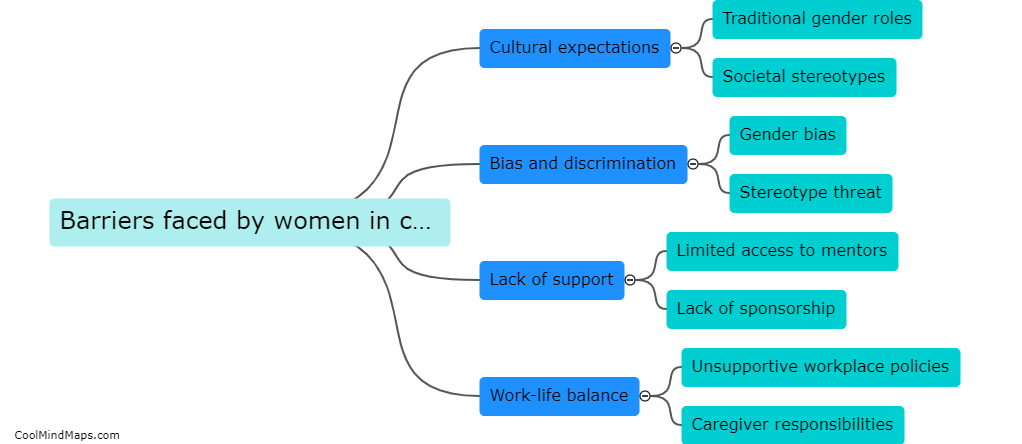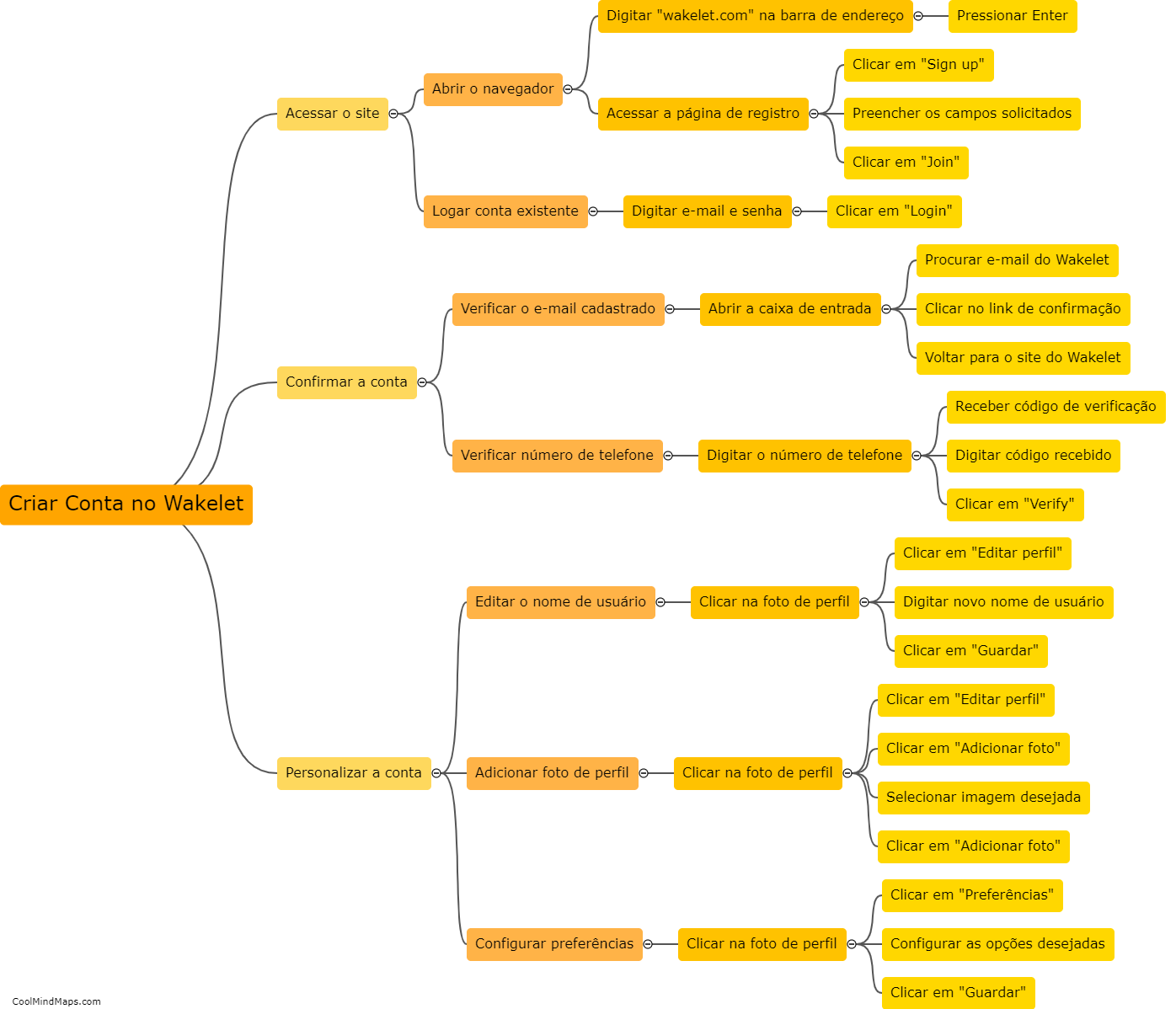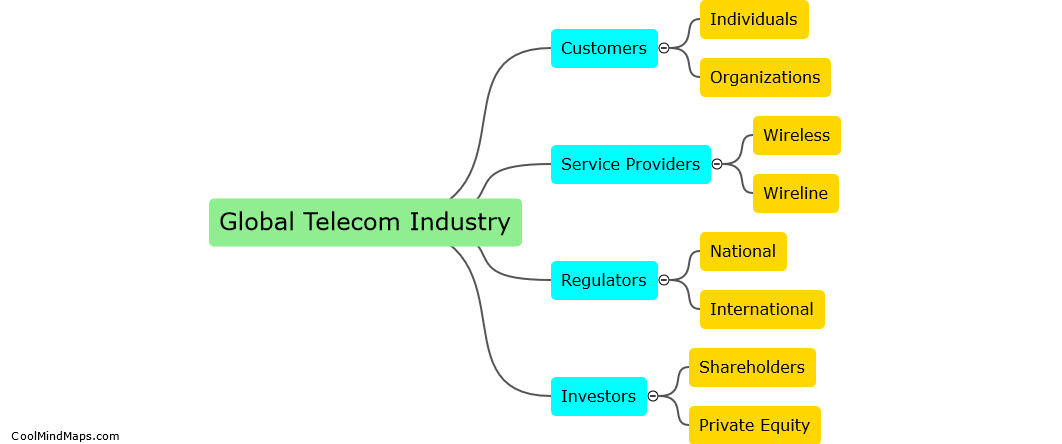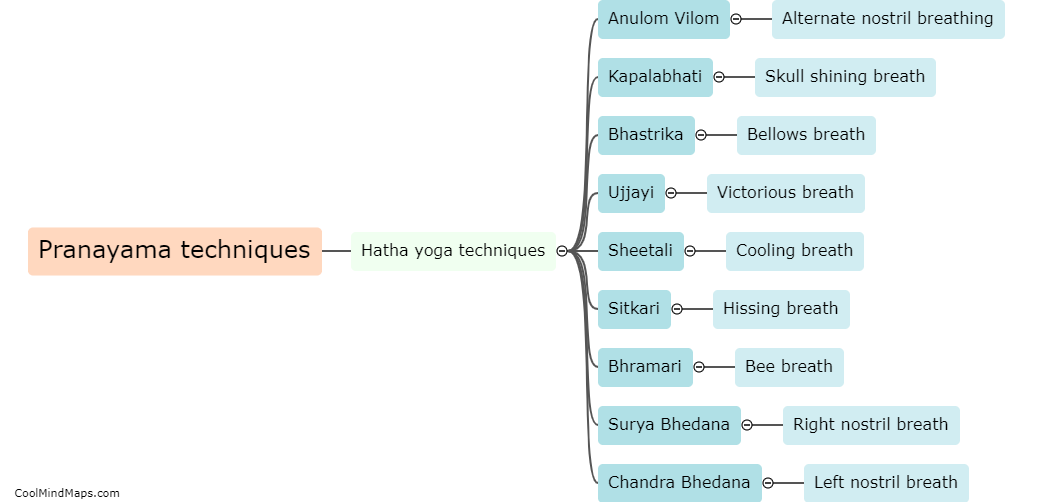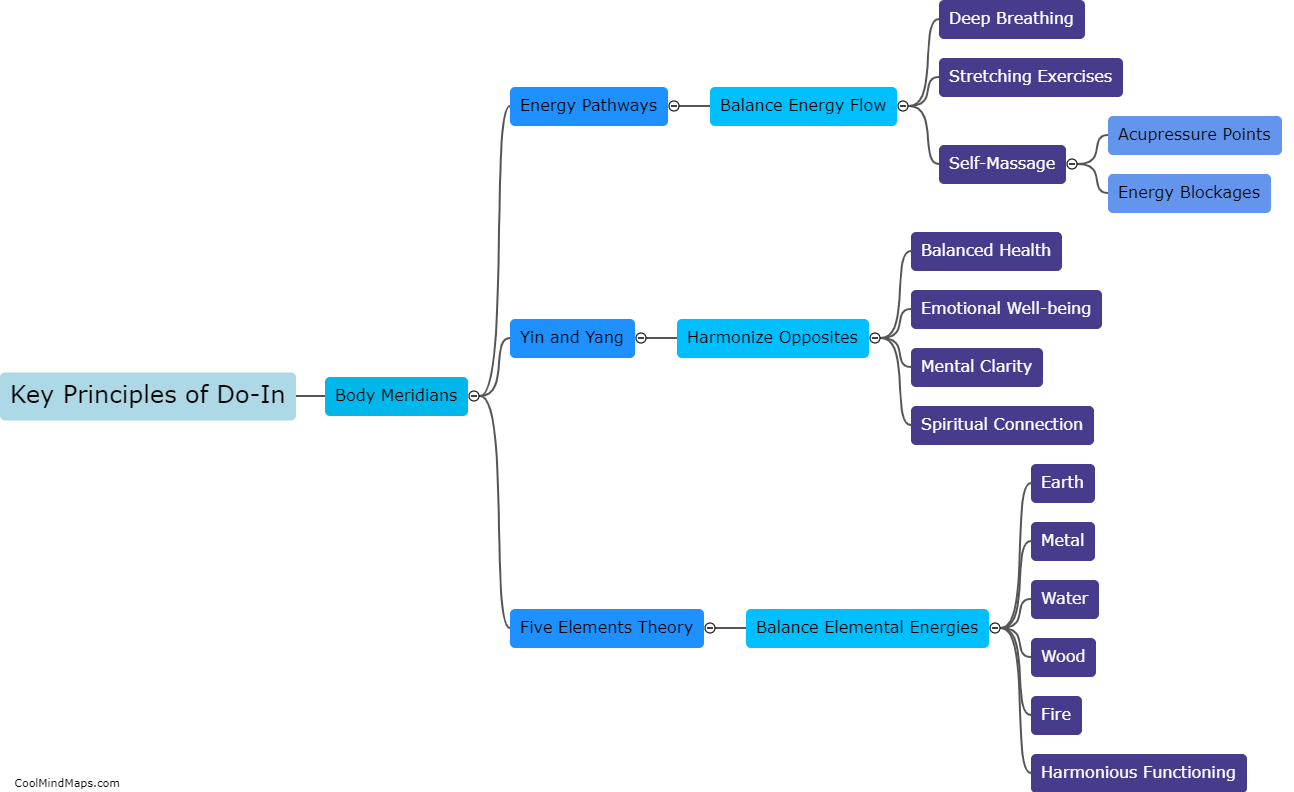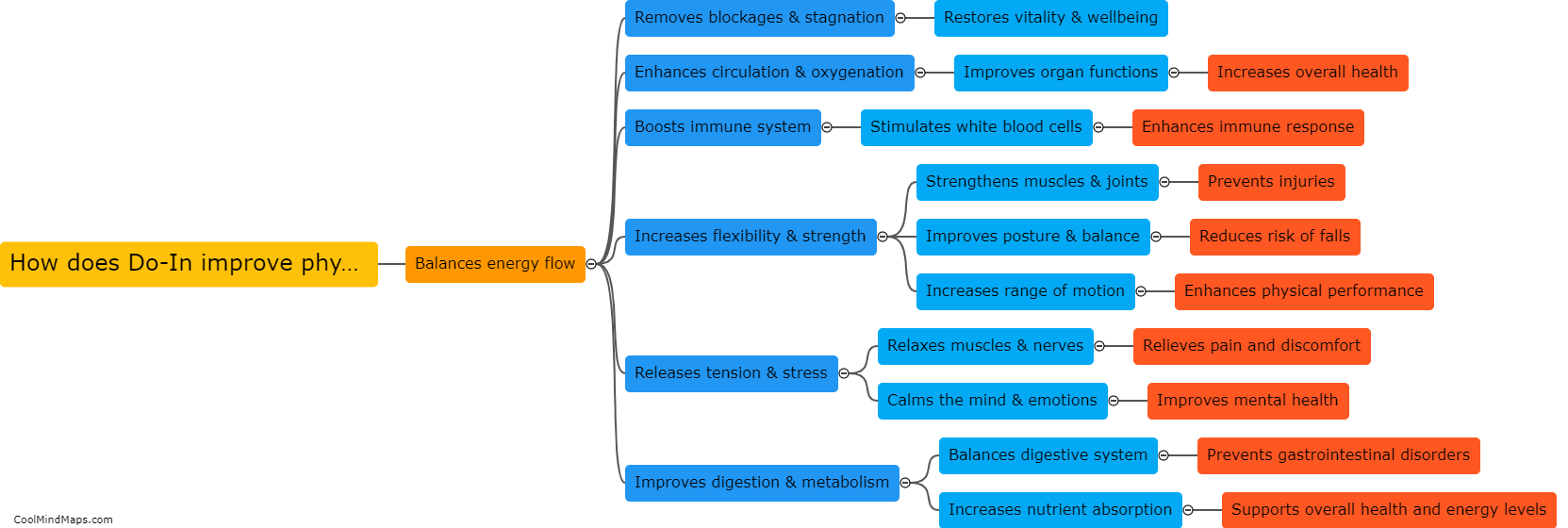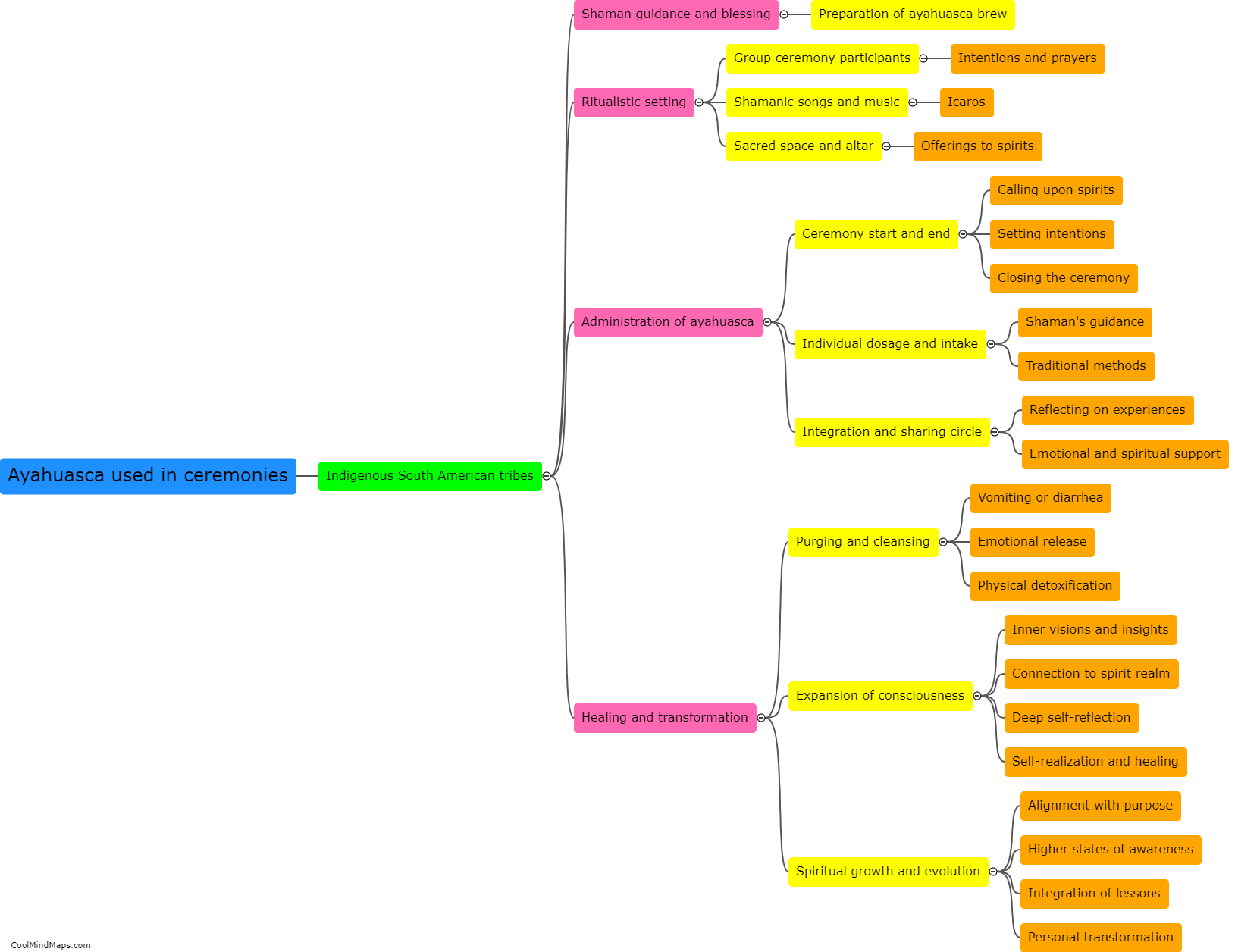What is the history of Do-In?
Do-In is a traditional form of self-massage and stretching that originated in ancient China and has deep roots in Japanese culture. The practice is believed to have been developed over 5,000 years ago and was initially used by Taoist priests to balance the body's energy and promote optimum health and well-being. It was later introduced in Japan, where it became popular among Buddhist monks who used it to enhance their meditation and cultivate their inner strength. Over time, Do-In evolved to incorporate elements of acupuncture, acupressure, and traditional Chinese medicine. Today, it is widely practiced as a holistic and gentle form of physical therapy, helping individuals alleviate stress, improve circulation, balance their energy, and maintain overall health and vitality.
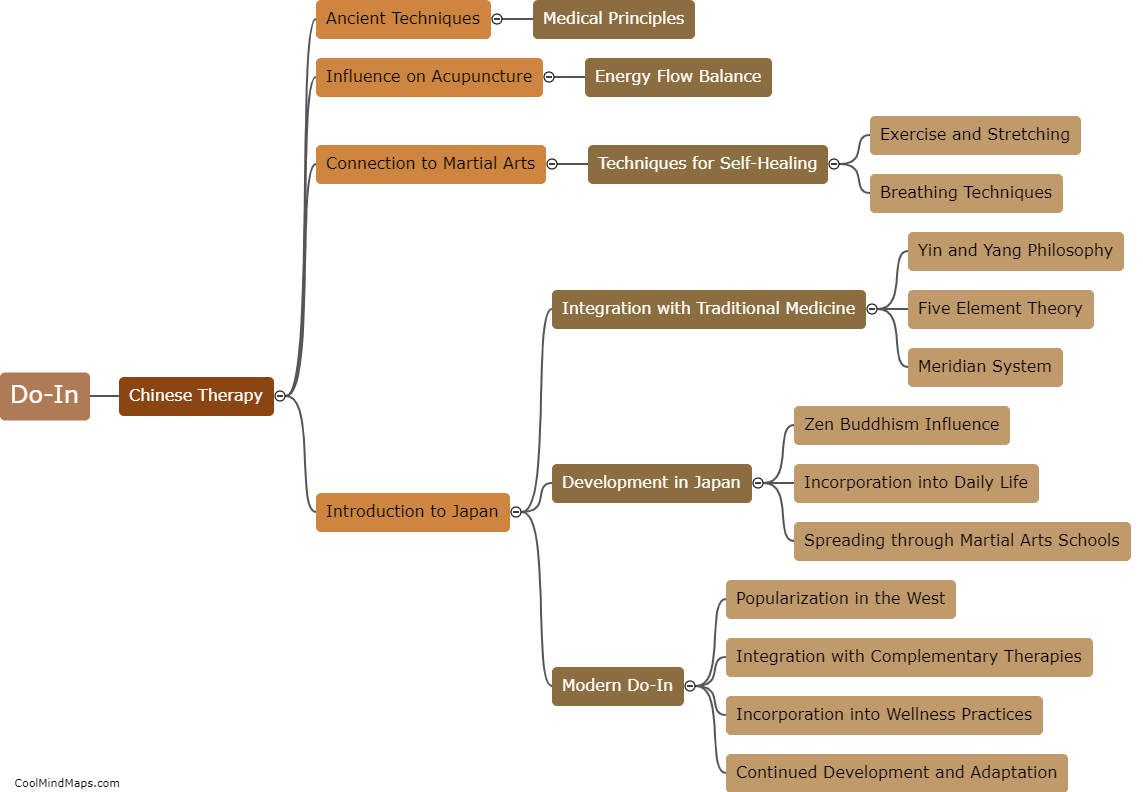
This mind map was published on 12 September 2023 and has been viewed 94 times.
